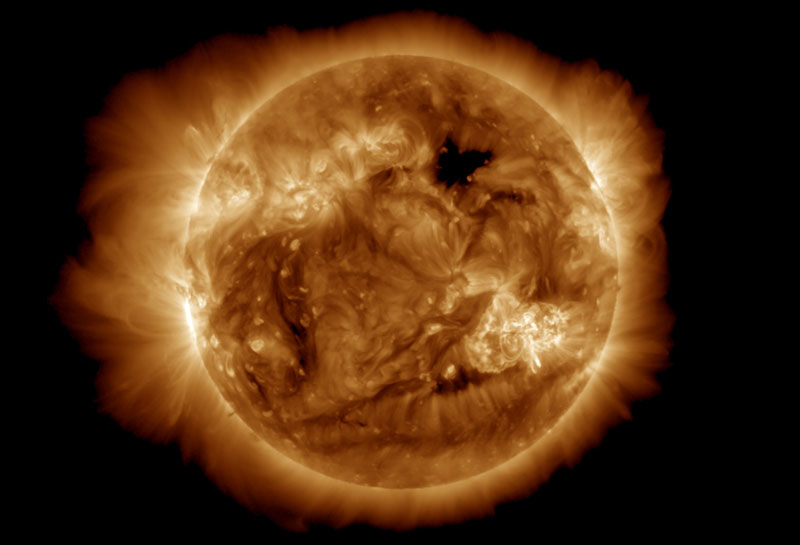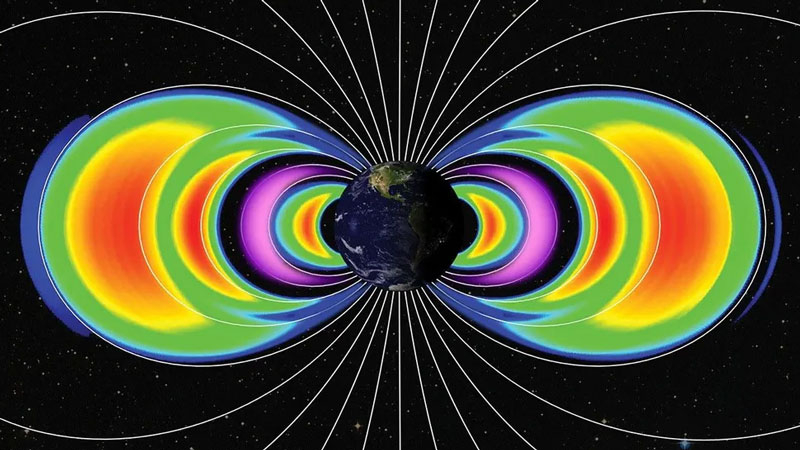It turned out that the Sun is capable of setting traps for near-Earth satellites. The abnormal activity of the star in May 2024 caused the appearance of two new radiation belts around our planet. These areas with increased radiation can disable the electronics of devices and harm the health of astronauts. It is known that the Earth is constantly surrounded by two such belts (Van Allen belts), and new belts can be an unpleasant surprise.

The Sun on May 10, 2024, through ultraviolet filters. Image Credit: NOAA
The Van Allen belts are regions of space where the Earth’s magnetic field traps high-energy particles. The inner belt contains mostly protons and is therefore more dangerous. It extends from about 500 km to 4,000 km from the planet’s surface. The outer belt consists mainly of electrons, starts at about 8,000 km and extends to 17,000 km or more. Between the belts is an empty gap of 2-3 Earth radii. It is in this gap that two additional belts were discovered that should not be there.
The discovery was made by the NASA CIRBE satellite thanks to a team of Canadian scientists. The device was launched in April 2023 to study the planet’s radiation belts, but in April 2024 it failed due to a malfunction. In fact, it “slept through” the moment of the largest solar flare, which caused the strongest geomagnetic storm on Earth since 1989 with northern lights observed as far away as the Stavropol Territory. However, in June, the satellite started working again, and the data it collected discouraged scientists – the Earth had two new radiation belts.

Image source: NASA
The composition of the belts also surprised the researchers. The closest of them (shown in purple on the diagram) contained mostly energetic protons, while the second, located a little further away, consisted of electrons. The planet’s magnetic field apparently captured particles ejected from the Sun during the May activity and formed two new belts from them. The electron belt also suddenly disappeared by September, having been destroyed, among other things, by the impact of new emissions from the Sun.
The proton belt remains to this day, showing unprecedented stability. It now poses a threat to satellites in geostationary orbit and potential lunar travelers. It is clear that future high-orbit missions will have to take into account the possibility of long-term radiation belts forming where none existed before. Otherwise, some space missions may fail or be complicated.